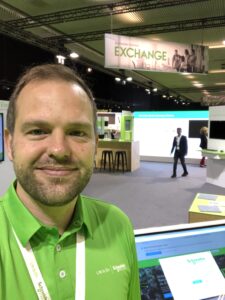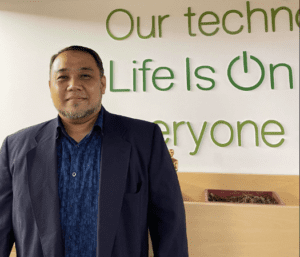 A Traditional HMI
A Traditional HMI
A human machine interface (HMI) is the main visible automation component that manages all vital machine features, including visualization, control, supervision, diagnostics, monitoring and data logging.
The Current HMI Trend
When we talk about the IIoT, we are talking about the convergence of technologies from the Information domain with data and technologies from the Operational domain. This convergence augments the depth of knowledge we can obtain on a process, a machine, or an asset, by applying pre-established IT models to the data it produces. Ultimately, these complex technologies enable the operator of a machine (or line manager, plant supervisor etc.) to make the best decisions in their maintenance/optimization tasks. This means that, while investing in and integrating the latest, most advanced technologies, we still need to provide users with a single and simple way to visualize the real-time status of what is going on and what should be done.
So, when qualifying an automation solution to enable the power of the IIoT, we need to talk specifically about IT/OT architectures. People are working right at the point of the IT/OT convergence so their capacity to make decisions leading to the most the effective actions should be fully part of the equation.
For this reason, I am convinced that, when thinking about a smart machine or an IIoT solution in the current digital age, we should actually be considering not just the IT/OT convergence but the IT/OT/human convergence: How can we place the operational staff at the center of the digital revolution and get the best out of the workers using the new digital technologies? By the way, this consideration should not be limited to the Production department, but also include Marketing, Technical, Human Resources etc., as they would also be impacted by empowering their teams.
Thoughts on the Future of the HMI
We can specifically look at field operators or line managers who are continuously supervising, maintaining, or actioning the machines and the manufacturing lines. They require an interface to those machines and manufacturing lines that would give them access – in a collaborative manner – to the simple and visible indicators that they need. Those indicators result from real-time OT data crossed with IT applications, analytics or models.
Furthermore, operators and management staff are becoming younger and younger, changing roles or responsibilities more regularly than before. They are often less experienced and, therefore, they expect more standardized intelligence from the human interface of the system they are working on. They need to become connected to a single version of the truth in which complex data can be turned into contextualized information for various users – at any time and from anywhere.
Requirements from an HMI installation include:
- Simple visibility: The information displayed on the HMI system should be extremely simple and intuitive by design. The HMI should deliver edge computing services (real-time, critical computing that is complementary to the cloud computing capabilities of the IoT solution) to better contextualize information.
- High flexibility: The HMI system should behave as a highly connectable automation component which not only connects various field buses and sensors, but also integrates IT networks and services. It should also be customizable and scalable to be used as an open window into any type of IIoT architecture. It must also present information in diverse ways and enable collaboration between various stakeholders.
- Strong reliability: IT/OT/Human convergence needs to allow for peace of mind on the site or the machine. It must be robust, secure and largely supported However it also needs to demonstrate a smooth ability to help in the migration from one technology generation to another one while leveraging innovation: humans need state-of-the-art visualization technologies while keeping compatibilities with the old automation or mechanical technologies they are using.
Conclusion
It is an IIoT solution that empowers the human operators. We want to connect them anywhere from the core of the smart machine or manufacturing line, simplifying their decision-making process, boost their maintenance skills, increase their collaboration and simply motivate them further in their workspace. All this requires a HMI system able to reconcile real-time OT and IT data and generate simple status updates and commands for any type of operator. This is the best way to converge the human, IT, and OT dimensions.
The Harmony HMI provides stable platforms and reliable operator interface esthetics, including IIoT challenges at Connected products level in Schneider EcoStruxure Architecture by enabling secure communication, connectivity and efficiency to the required Software and applications on Edge control level, thus opening up more business opportunities.




Conversation
The machine’s monitors and controls allow the operator to control or monitor the machine. Engineers can program HMI to realize control and monitoring functions. HMI and PLC work together to monitor and control the machine. This means that they must be compatible and must also use the same data instructions.
Absolutely! This relates to the flexibility aspect of an HMI which needs to be interoperable with PLC function. For matter of optimization we even offer HMIs which integrate the PLC control capabilities and give native integration of the monitoring and controls.
Hey, loved your blog!
Thanks for your appreciation!